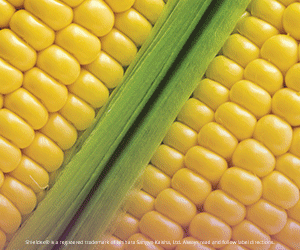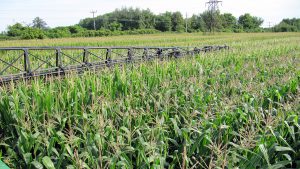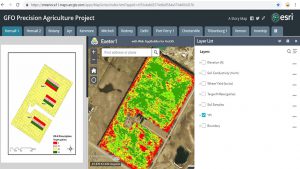Tar spot of corn
A NEW DISEASE THREAT
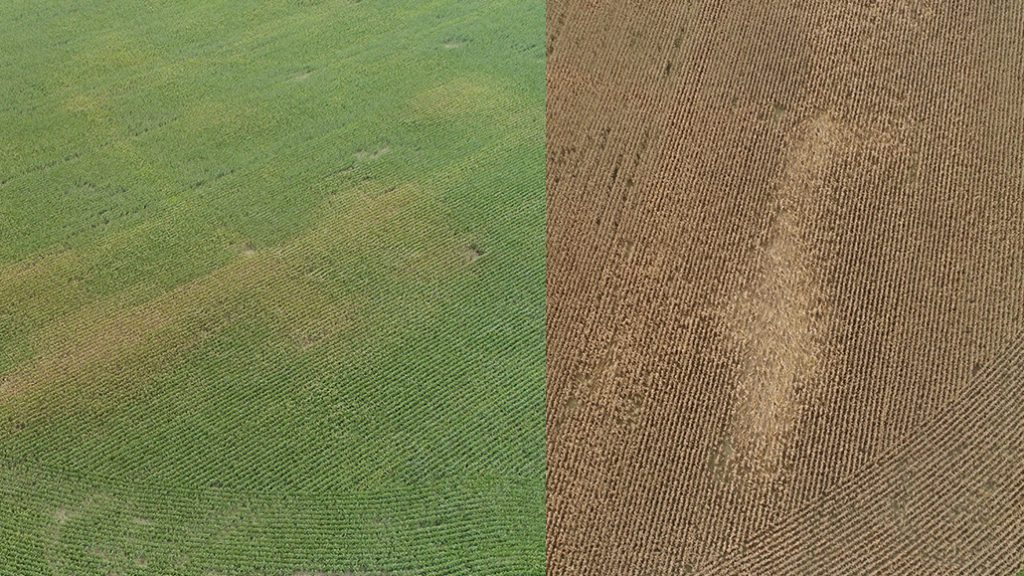
CORN PRODUCERS IN southwestern Ontario have a new disease threat to look out for this growing season. Tar spot of corn rapidly developed in Michigan in 2018 after first being spotted in a couple of fields in Indiana and Illinois in 2015. The disease looks like little specks of tar on the leaf that are hard to rub off, and there may also be a fish eye around some of them. It is better known in Mexico and Central America.
Dr. Martin Chilvers, an associate professor in the Department of Plant, Soil and Microbial Sciences at Michigan State University (MSU), has followed the progression of tar spot in the U.S. and presented an overview of the disease threat at the 2019 Southwest Agricultural Conference.
So far, they know the disease is caused by the fungus Phyllachora maydis (which overwinters on infested residue), it needs to reproduce on corn (it doesn’t affect soybeans or wheat), it doesn’t need other diseases to infect the plant, and it’s not seed transmitted.
Chilvers highlighted the work of researchers at the International Maize and Wheat Improvement Center (CIMMYT) in Mexico who studied how the weather in their affected regions correlated to weather in the northern U.S. They found that cooler average temperatures, higher relative humidity, prolonged leaf wetness at night, and monthly rainfall of at least 5.9 inches (about 150 millimetres) contributed to the highest levels of tar spot.
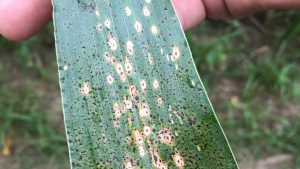
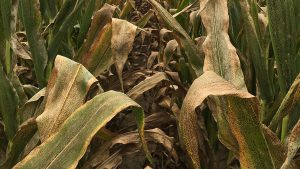
QUICK PROGRESSION
Chilvers says what is most striking to him is how quickly this disease has progressed in his region.
“We had one or two fields in September 2016 with a few spots on leaves. It was kind of hard to find. In 2017, we had a field where the disease was all over the plants. In 2018, we documented the progression of tar spot across an entire field in a matter of two weeks from the end of August to the beginning of September — the field shut down prematurely due to this disease.”
For every one per cent increase in the amount of tar spot present in a field, there is a yield loss of half a bushel per acre.
Chilvers and his team quickly put together a fungicide trial in 2018 to see if there was an effective method of control available to help reduce losses from tar spot.
They tested two different modes of action at the R3 stage — Qol strobilurin (Group 11) and DMI triazole (group 3) — and a premix. Where fungicide was applied, some green leaf retention was seen. The premix worked better than either product group alone.
“One of the biggest questions we have is when should we be making these fungicide applications,” says Chilvers. “I’ve seen some fields where an R1 application was made and it held up fairly well. In other situations, it held up for a few weeks and then disease moved in. So, its still one of our biggest questions moving forward.”
CONTINUING RESEARCH
Chilvers says its important to understand the best timing for fungicide application because farmers don’t want to be over applying due to costs and it could trigger resistance issues. They are continuing their work to assess this timing as well as working to develop spray models. They also want to understand more about the epidemiology of the disease, such as the timing of spore release and plant infection.
Hybrid resistance (susceptibility) to tar spot is another important factor. Chilvers says there is some performance data on this, but because they haven’t screened this germplasm before, most hybrids currently in use are susceptible. The MSU corn performance trials (available online at https://varietytrials.msu.edu/corn/) have information about the amount of tar spot in specific varieties.
Mexico has hybrids which offer better resistance since they have been dealing with this disease longer and Chilvers hopes to work with researchers there to develop hybrids with more resistance for use in the U.S. Until then, farmers are being advised to plant more than one hybrid to spread their risk and choose those with a high stalk strength to help resist lodging.
According to Albert Tenuta, Ontario Ministry of Agiculture, Food and Rural Affairs field crop pathologist, the annual OMAFRA-Agriculture and Agri-Food Canada corn disease survey (funded by Grain Farmers of Ontario) has not found tar spot disease to date; but if it arrives, it likely will move into the Essex-Kent region. Chilvers says when tar spot first shows up, it likely won’t be at yield impacting levels — but given what he has seen in Michigan, that will quickly change.
ONTARIO CORN DISEASE SURVEY
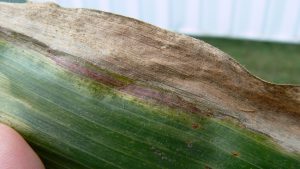
The yearly corn disease survey, conducted by the Ontario Ministry of Agriculture, Food and Rural Affairs (OMAFRA) in partnership with Agriculture and Agri-Food Canada, provides vital information on endemic pathogen populations and allows for scouting of new invasive pathogens. The information is used by public and private breeders to focus their hybrid development to help combat future challenges and provides an early warning for farmers to look out for emerging/progressing disease threats. It also allows researchers to assess the prevalence of known diseases.
This year the survey found common rust, eyespot, gray leaf spot (GLS), northern corn leaf blight (NCLB), and northern leaf spot (NLS) to be the most common leaf diseases but their overall severity and incidence was significantly lower when compared to the previous three years.
The survey tracks diseases of export significance, such as Stewart’s bacterial wilt. This was a significant problem in seed corn production in Ontario; but the disease has not been detected for five years which corresponds to a decrease in the population of the corn flea beetle which vectors the disease.
Albert Tenuta, field crop plant pathologist for OMAFRA, notes the survey is particularly important to track the progress of diseases that have devastated fields south of the border. For example, Goss’ wilt and tar spot have so far not been detected in the annual survey but they are serious disease threats. It’s important to note that if a disease does not show up in the survey, it could still be present in the province, it just was not seen at detectable levels.
The results of the yearly corn disease survey are available on OMAFRA’s Field Crop News website (www.fieldcropsnews.com).
Grain Farmers of Ontario provides funding to support the corn disease survey. •


